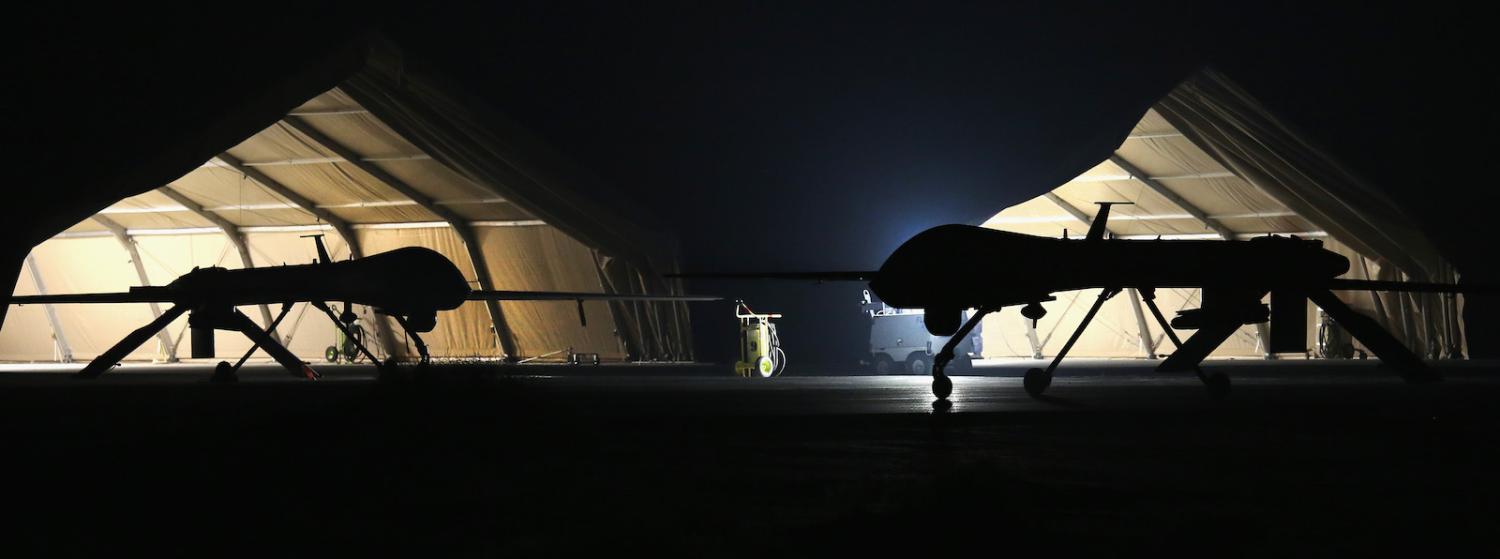Recent revelations confirm that under President Donald Trump, the use of armed unmanned aerial systems, drones, in US combat operations has increased significantly. For example, in 2017–18, the Trump administration launched 238 drone strikes on Yemen, Somalia, and Pakistan, according to data from US Central Command and the Bureau of Investigative Journalism in London, reported in The Daily Beast.
What began as a limited and controversial tool for targeting specific terrorist or insurgent leaders is now a critically important platform, used for surveillance, support for ground troops, and “targeted killing”.
Assassination was still regarded as forbidden political violence, but what used to be called assassination was now defined as something else, and considered a legitimate combat operation.
The growth of widespread killing-by-drone is typically associated with the Obama administration. But it has quietly continued and escalated under Trump. Due to their lethality and comparable precision, drones have become an institution in the unending global war on terrorism.
As I show in a recent paper in the European Journal of International Relations, the use of armed drones began as a secret and tentative George W Bush administration program within the Central Intelligence Agency (CIA). The program underwent major expansion during the Obama administration. Although the US military now conducts most drone strikes, the history of this practice can be traced back to the organisational evolution of the CIA into a unit of killers, not only spies.
In the decades before the 11 September 2001 attacks, “targeted killing” was prohibited for agents of the US government. For the CIA, it was considered assassination, or as former CIA director George Tenet put it, it was “policy” and thus outside the agency’s scope as an intelligence agency.
Other practical barriers made “targeted killing” even less palatable. Before the option of a drone-delivered Hellfire missile became available, the only ways to engage in “targeted killing” involved cruise missiles, large bombs dropped by crewed aircraft, or the use of ground troops – all options with unacceptably high probabilities of major bystander casualties. In the US government, neither the will nor the means to engage in “targeted killings ” existed.
But approaches and technology began to change. Three mechanisms propelled that change:
- The redefinition of actions or situations to change the rules establishing what is permissible (eg. defining counter-terrorism as a military rather than policing problem);
- The development of new technology, opening new avenues of action and changing ethical or regulatory judgements;
- The formation of new bureaucratic alliances in ways that invest programs with new authority or executive force.
Tracing the operation of these mechanisms explains how drones and “targeted killing” came to be so prominent.
The first phase of change lasted from 2000 to 2008. The military logic of the “War on Terror”, buttressed by the sweeping Authorization for the Use of Military Force passed by Congress on 14 September 2001, allowed the CIA to act in certain areas with the powers of a military agency. The CIA was tasked not just with collecting secret intelligence on geopolitical adversaries but also with penetrating and undermining groups of enemy fighters in their “safe havens”, starting with Yemen and Pakistan.
The CIA’s view of the use of lethal force changed. Assassination was still regarded as forbidden political violence, but what used to be called assassination was now defined as something else, and considered a legitimate combat operation. Within the CIA, the Counter-Terrorism Center and its director Cofer Black received the full backing of the Bush administration and grew substantially in size and scope. So did the technology: in 2000 the first attempts to arm an MQ-1 Predator succeeded. The CIA had its ideal weapon – a sort of airborne sniper rifle.
Yet during this first phase, drones were still used sparingly. As Bush administration counter-terrorism official Richard Clarke put it, the administration and the CIA did not want to “create a broad precedent that would allow intelligence officials in the future to have hit lists and routinely engage in something that approximated assassination”. The drones were used sparingly, mainly against especially “high-value targets”.
From 2009 onwards, under Barack Obama, that would change. Within a year, the Obama administration had presided over more strikes than the Bush administration had in the previous eight. Obama took a far more personal role, signing off on lists of targets in weekly meetings with the CIA director. By micromanaging in this fashion, Obama injected executive authority into the CIA’s targeting practices, directly legitimating expansions in the scope and pace of targeting.
During the Obama presidency, “targeted killing” became procedurally more defined and legally institutionalised, culminating in a 2012 white paper that finalised its shift from the clandestine and exceptional to normal and routine. And this period saw drone technology improve significantly, with larger aircraft (namely, the MQ-9 Reaper) and higher-quality cameras enabling increasingly precise and regular targeting.
First two years of Obama: 186 drone strikes in Yemen, Somalia and Pakistan.
— Spencer Ackerman (@attackerman) November 26, 2018
First two years of Trump: 238 drone strikes in Yemen, Somalia and Pakistan.
And a lot of pattern breakdowns for 2018-era Drone Strikes below those toplines. https://t.co/ULReIcfrxV
The expansion of killing-by-drone is a significant element of the legacies of the two previous presidents and the “war on terror”. And it has changed the military and intelligence organisations that use drones.
Military and intelligence organisations have their own cultures and institutions. They do not dramatically shift their practices at the drop of a hat. In the case of US drone use, targeted killing became a staple of counter-terrorism operations over almost a decade and a half of institutional transformation. Although the CIA’s involvement has been pared back, the military employs its armed drones in an increasingly wide range of theatres.
It seems the Trump administration has enthusiastically continued this practice, having relaxed targeting standards and engaged in operations in a broader range of places. But it could only do so with the foundation laid by the previous two administrations.


